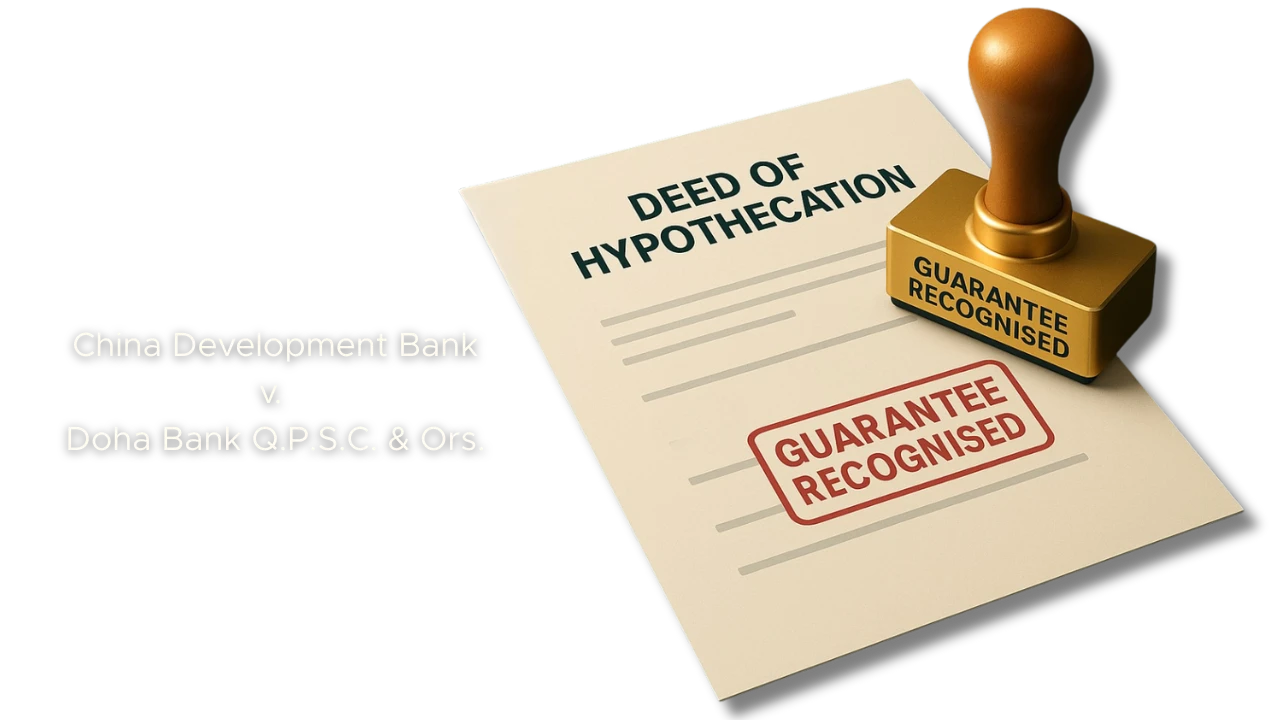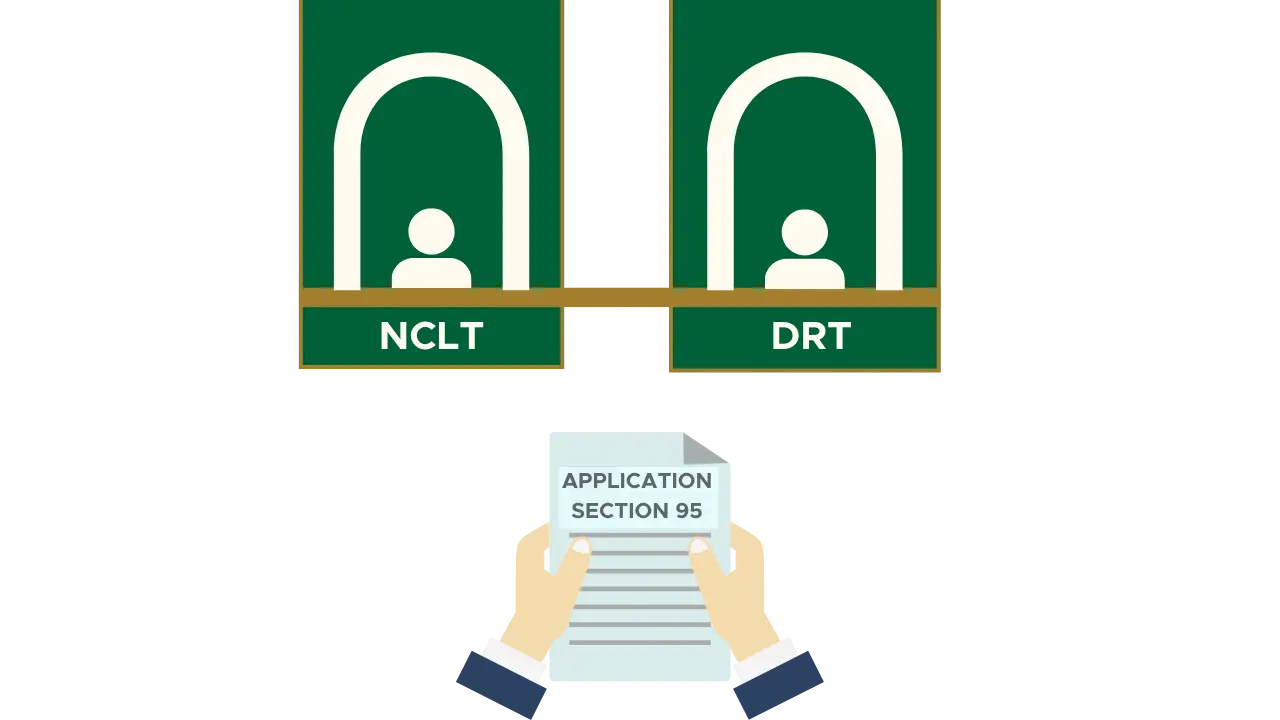Introduction
The Supreme Court of India, in its recent significant judgement in China Development Bank v. Doha Bank Q.P.S.C. & Ors1, meticulously dissects the nature of financial debt, particularly in the context of guarantees embedded within hypothecation deeds. This decision, emerging from the CIRP of Reliance Infratel Limited (RITL), brings much-needed clarity on how multi-party security arrangements are to be construed under IBC, and its implications resonate deeply across the lending and distressed asset resolution ecosystem.
The fundamental issue was whether the appellants, a consortium of banks including China Development Bank, could be classified as “Financial Creditors” within the meaning of Section 5(7) of the IBC. A consequential issue arose if they were not deemed Financial Creditors: could they be classified as “Secured Creditors” and receive payouts commensurate with their security interest? NCLAT had previously held that the Deeds of Hypothecation (DoH) in question did not constitute deeds of guarantee, thereby de-recognising the appellants as Financial Creditors. The Supreme Court was tasked with scrutinising this interpretation, particularly the interplay between hypothecation and guarantee within the IBC framework.
Factual Background and Role of Deeds of Hypothecation
The genesis of the dispute lay in the CIRP initiated against RITL (Corporate Debtor), one of the “RCom entities” (Reliance Communications Infrastructure Ltd. (RCIL), Reliance Communications Ltd. (RCom), and Reliance Telecom Ltd. (RTL)). The appellants, who had extended financial facilities primarily to RCom and RTL, submitted claims as Financial Creditors of RITL. Their claims were initially admitted by the Resolution Professional (RP), leading to their inclusion in CoC. However, Doha Bank, a direct lender, challenged this classification, arguing that the appellants were not direct lenders to RITL and thus could not be admitted as Financial Creditors based on DoH.
The DoH, executed jointly by the RCom entities, including RITL, aimed to create a charge over their pooled properties to secure the repayment of facilities extended by the appellants. Crucially, the DoH stipulated that if any RCom entity defaulted, all entities would be liable to make good any shortfall after the realisation of hypothecated assets. This “obligation to pay the shortfall” was contended by the appellants to be in the nature of a guarantee.
The appellants argued that RITL, as a “Chargor”, had undertaken a three-fold obligation under the DoH: a covenant to pay amounts due under facilities availed by RCom and RTL, creation of a charge over its asset pool, and an unambiguous agreement to make good any shortfall in the realisation of outstanding debt. This “promise to pay” the shortfall, they contended, unequivocally brought it within the ambit of a guarantee as per Section 126 of the Indian Contract Act, 1872. They emphasised that the DoH allowed the Security Trustee to proceed against RITL without first exhausting remedies against the primary borrower. Furthermore, they asserted that the definition of “financial debt” under Section 5(8) of the IBC is inclusive and does not necessitate direct disbursement of funds to the Corporate Debtor. They cited previous Supreme Court decisions like Kotak Mahindra Bank Limited v. A. Balakrishnan2 and Maitreya Doshi v. Anand Rathi Global Finance Ltd. & Ors3 to support this. The appellants also highlighted that the CIRP had proceeded on the premise of their status as Financial Creditors, and overturning this at a belated stage would disrupt the resolution process. Alternatively, they sought recognition as Secured Creditors with commensurate payouts.
Doha Bank and other respondents countered that the DoH was merely a hypothecation document creating a charge, not a guarantee. They argued that a guarantee under Section 126 of the Contract Act requires three parties: a guarantor, a principal debtor, and a creditor, and that the DoH, with only Chargors and a Security Trustee as parties, lacked this essential tripartite structure. They contended that clause 5(iii) of the DoH, relied upon by the appellants, was a standard clause for enforcing security and did not imply a guarantee. Moreover, they submitted that any contingent contract for shortfall would have ceased to exist upon the declaration of moratorium under Section 14 of the IBC, as the hypothecated property could no longer be sold. They relied on Anuj Jain, Interim Resolution Professional for Jaypee Infratech Limited v. Axis Bank Limited & Ors4 to argue that a mere security interest does not constitute financial debt.
Supreme Court’s Reasoning
The Supreme Court, led by Justice Abhay S. Oka, undertook a meticulous examination of the DoH and the Master Security Trustee Agreement (MSTA). The Court first reiterated a crucial principle of contractual interpretation: the nomenclature of a document is not decisive of its true nature; rather, the overall reading of the document and its effect must be considered. Applying this, the Court emphasised that merely because the document was titled “Deed of Hypothecation” did not preclude it from containing elements of a guarantee.
The Court delved into the clauses of the MSTA and DoH. It noted that the Security Trustee was appointed by the RCom entities to act for the benefit of the Secured Lenders (appellants). Crucially, the Secured Lenders had authorised the Security Trustee to execute security documents and accept security on their behalf.
The Court’s primary focus was on Clause 5(iii) of the DoH. While acknowledging the initial part of the clause dealing with the enforcement of hypothecated assets, the Court laid significant emphasis on the latter part: “each of the Chargors agree to accept the Security Trustee’s account of sales and realisation as sufficient proof of the amount realised and relative expenses and to pay on demand by the Security Trustee and/or receiver any shortfall or deficiency thereby shown”. The Court definitively interpreted this to mean that “if after the sale of hypothecated assets, there is any shortfall in the discharge of the liabilities of RCom or RTL, the Corporate Debtor is under an obligation to pay the shortfall or deficiency”.
This obligation, in the Court’s view, squarely placed RITL, which was not the original borrower of the appellants, in the position of a guarantor for the liabilities of RCom and RTL. The Court affirmed that a contract of guarantee under Section 126 of the Contract Act exists when there is a promise to perform the liability of a third person in case of default. Here, RITL undertook to discharge the liability of RCom and RTL to the appellants in case of their default, thereby fulfilling the criteria of a guarantee. The Court also clarified that the presence of the Security Trustee acting on behalf of the appellants completed the tripartite relationship required for a contract of guarantee.
Regarding the respondents’ argument about the moratorium extinguishing the contingent contract, the Court implicitly rejected this by focusing on the underlying nature of the obligation as a guarantee, which falls under “financial debt” irrespective of the immediate ability to enforce security post-moratorium. The Court affirmed that financial debt under Section 5(8)(i) includes “any liability in respect of any of the guarantee or indemnity for any of the items referred to in sub-clause (a) to (h) of this clause”. Since the facilities extended to RCom and RTL were undoubtedly “money borrowed against the payment of interest”, the guarantee provided by RITL for such a financial facility would constitute a financial debt.
This ruling reiterates that the definition of “financial debt” under the IBC is expansive and not restricted to direct disbursements. It clarifies that a liability arising from a guarantee, even if embedded within a hypothecation deed can qualify as financial debt, thereby bestowing “Financial Creditor” status upon the beneficiary. The Apex Court relied on a specific clause in the hypothecation deed that obligated the chargor to any shortfall after the sale of hypothecated assets. The court interpreted this as a guarantee. This is conflicting with previous judgments like Jaypee Infratech5 which was followed in Phoenix ARC (P) Ltd. v. Ketulbhai Ramubhai Patel6 where the Court held that a mortgage by a third-party security provider does not constitute a guarantee without a separate deed of guarantee, which may create certain challenges for future.
Conclusion
The judgment’s expansive interpretation of “guarantee by conduct” broadens the gateway for creditors to assert financial creditor status, potentially strengthening their position in insolvency proceedings. However, by seemingly diverging from earlier precedents without clear reconciliation, it has inadvertently created a landscape ripe for legal challenges and uncertainty regarding the true scope of “financial debt” arising from third-party security arrangements. As the Indian insolvency regime continues to mature, it is imperative for future judicial pronouncements to provide much-needed clarity, perhaps through the considered deliberation of a larger bench, to ensure predictability, consistency, and efficiency in the application of the IBC. The true essence of financial creditor status, and indeed, the integrity of the insolvency process, hinges on achieving a delicate balance between commercial reality and legal precision.
Citations
- Civil Appeal No. 7298 of 2022
- Civil Appeal No. 689 of 2021
- Civil Appeal No. 6613 of 2021
- Civil Appeal Nos. 8512-8527 of 2019
- (2020) 8 SCC 401
- Civil Appeal No.5146 of 2019
Expositor(s): Adv. Khushboo Saraf






